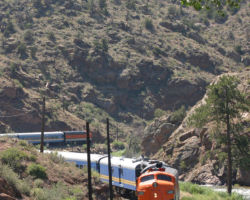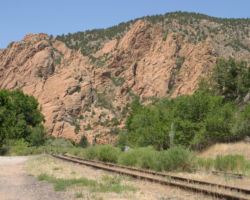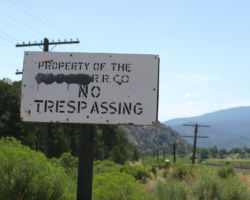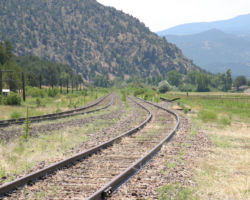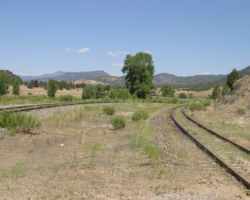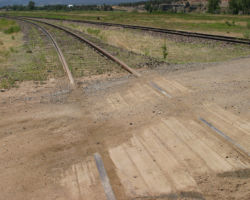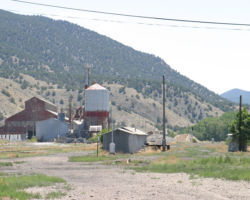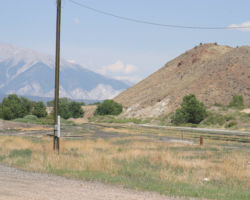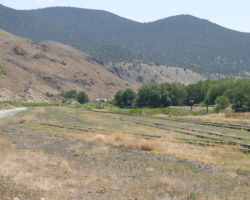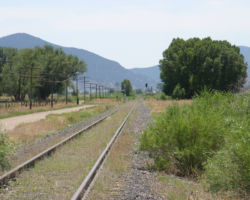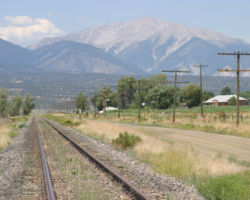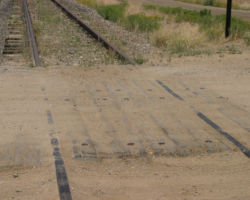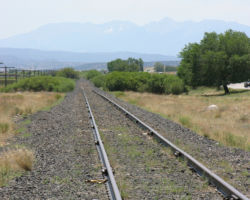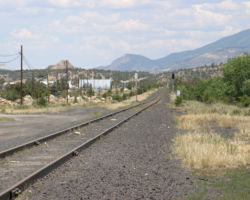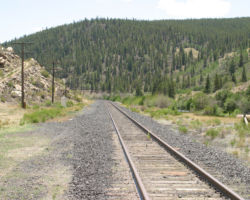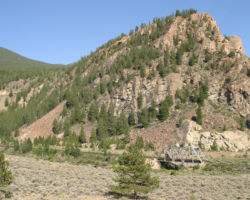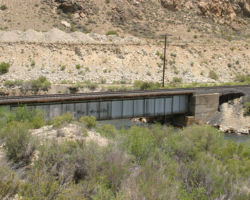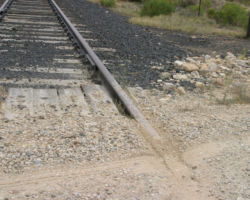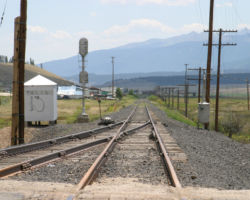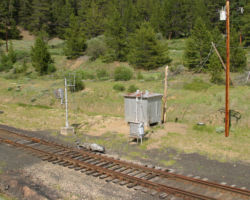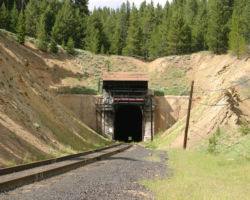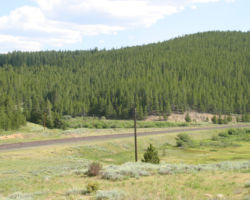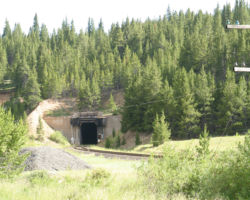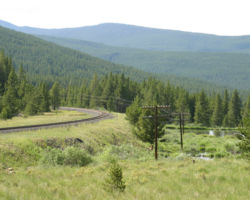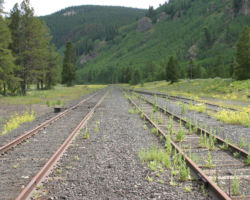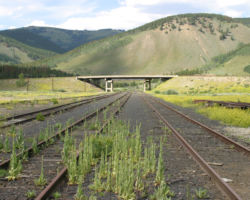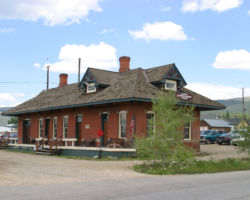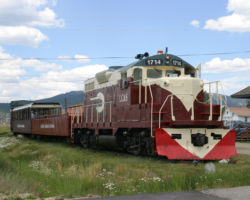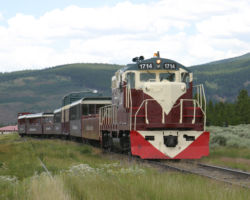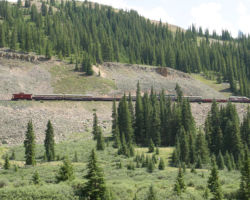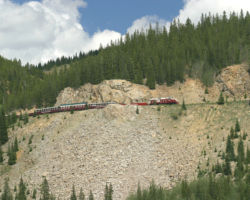Paul Birkholz posted the following irresistable tidbit to the DRGW list on Thursday, Jul 21, 2005: “I received information that a hi-railer arrived in Buena Vista via rail on Monday morning from the east. They stopped briefly in town for gas (off the rail) and then got back on the rail and continued west. Other than the Buena Vista sighting I haven’t heard how far the vehicle may have gone.” Since I’ve heard from several people that UP doesn’t make a regular habit of hyrailing the Pass, with it having been out of service for some eight years, the possibility that something was about to happen was too good to pass up. I’d taken Friday off work for a Helper, UT, trip originally, but I decided it was too darn hot. So, instead, I decided to head up into the high country in order to substantiate the report and get a better idea where the run started and ended.
I started the morning in Pueblo, CO. The TP main is still very active between Pueblo and Parkdale, with three different railroads operating it. The best known is probably the Canon City & Royal Gorge, which runs a first class tourist train from Canon City west through the Gorge to Parkdale. Rock & Rail, a shortline operator, used to run rock trains from the Parkdale quarry over to Pueblo and then up to Colorado Springs. However, lately all I’ve seen them do is switch the Holcim cement plant at Portland, and the rock train has been running with UP power – specifically, the ex-DRGW GP60s – so they may not do the rock haul any longer. Also, UP also runs locals from Pueblo to Canon City to serve the generating station on the west side of town. Between Pueblo and Parkdale, I managed to meet trains from all three operators. I have to admit, with the possibility of there having been a hyrail truck out, I was secretly hoping UP might be preparing to run another work train to Malta or some such, but there was no sign of that.
West of Parkdale is where I focused for the day. This section, aside from a few special trains, has been completely shut down since I moved to Colorado in the summer of 2000. The basic process was to keep surveying crossings as I moved west, looking for signs of dirt being moved by flanged wheels, or tire tracks on the railhead. The good news is that something flanged did go through Buena Vista. All of the crossings between Buena Vista and Malta have had their flangeways recently disturbed. There’s no sign of anything recent to the east of BV, nor any sign of anything beyond Malta on the west. Also, as of the broken wire from the Kobe high/wide detector was hanging down and in the way of any vehicle wanting to pass underneath. Today, it was neatly tied back to one of the poles. Also, I met a hyrail (on the highway) just out of Cotopaxi, headed east. There’s a good chance it was just coming over from western Colorado, but you can always hope…
Although this trip report has a lot less trains than normal, I hope those of you who don’t get a chance to see the line regularly enjoy this look at what the TP mainline looks like today. Hopefully, in the future, we’ll be able to photograph the same spots, except with trains. For the moment, though, there’s very little hope of traffic returning in the near future. There’s just no reason for it. Probably only a great expansion in western Colorado coal production would spur UP to do anything at all about it. At least they’ve come to their senses and taken it off the abandonment list, so for the moment it’s safe.
Pueblo to Buena Vista
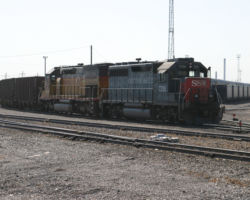
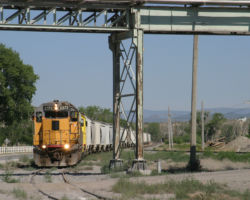
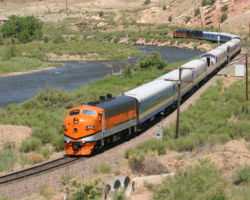
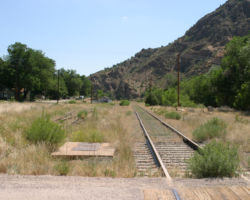
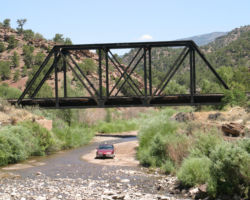
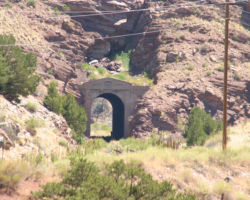
Buena Vista to Tennessee Pass
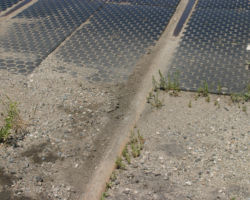
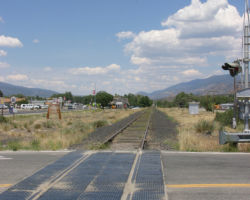
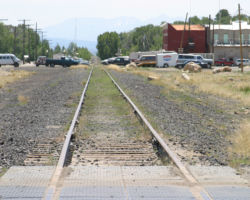
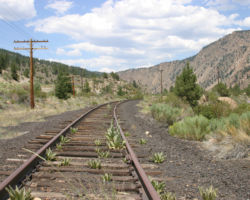
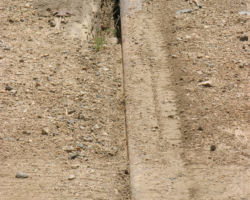
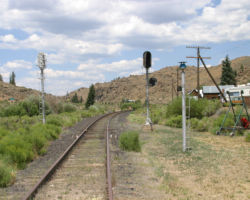
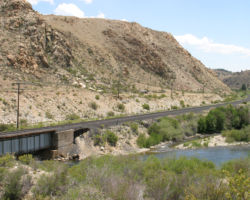
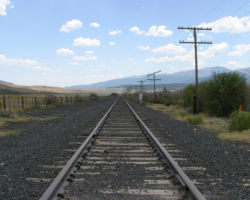
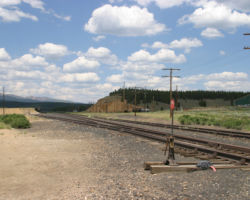
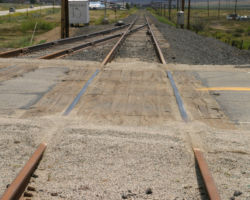
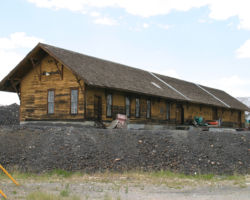
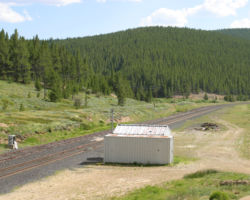
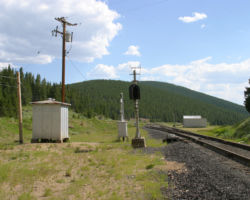
The Leadville, Colorado & Southern
In addition to the miles and miles of “dirt-fanning”, I also managed to catch up with Leadville’s tourist railroad, the Leadville, Colorado & Southern. I happened to be in town right before 1400h, when the second scheduled departure of the day occurs. Having never actually seen the LC&S moving, I decided to follow along. The line started life as part of the Denver, South Park, & Pacific narrow gauge mainline that came west from Denver to Como over Kenosha Pass, then north to Dillon over Boreas Pass, and then down into Leadville from the north via Fremont Pass. The railroad’s sanity is often questioned, since they chose to route over two high passes (Boreas and Fremont) rather than just follow a mostly water level route from their mainline at Buena Vista north to Leadville. By 1937, the line was owned by the Colorado & Southern, and continued producing heavy traffic from the Climax Molybdenum Mine at the summit of Fremont Pass. Unfortunately, the rest of the C&S narrow gauge (the ex-South Park lines) didn’t fare as well, and were mostly abandoned in 1937. The Climax branch continued, though, and was eventually standard-gauged in late August of 1943. For years, the line continued on as an isolated branch of the Colorado & Southern and eventually Burlington Northern. In 1980, with no more mine traffic, the line, buildings, and rolling stock were sold by BN to a local couple for $10.
The line today is still owned by the same people, and now operates as the Leadville, Colorado & Southern, a tourist hauler. They make two daily trips during the summer, each lasting about 2.5 hours, between Leadville and the end of track about a mile short of the Climax Mine. The mine, meanwhile, sits idle, though there is talk of bringing it back. The line is rather hard to railfan, as once it leaves Leadville, it runs high on mountainsides overlooking the road on the valley floor several hundred feet below. There are a few exposed rock faces, though, and I was able to photograph it crossing these.
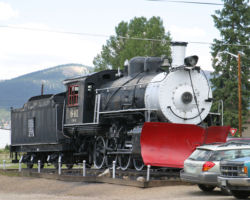
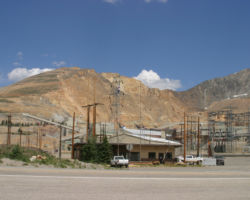
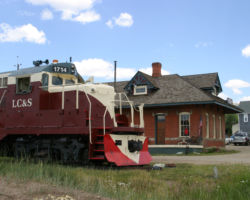
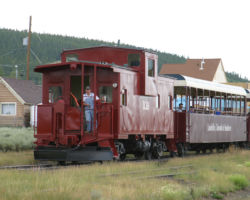
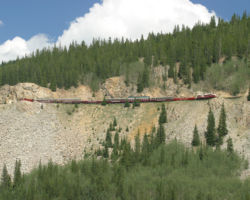
All photographs in this trip report were taken with a Canon EOS 10D using either a Canon 28-105mm USM or a Canon 75-300mm f4-5.3 IS/USM.
This work is copyright 2024 by Nathan D. Holmes, but all text and images are licensed and reusable under a Creative Commons Attribution-NonCommercial-ShareAlike license. Basically you’re welcome to use any of this as long as it’s not for commercial purposes, you credit me as the source, and you share any derivative works under the same license. I’d encourage others to consider similar licenses for their works.
